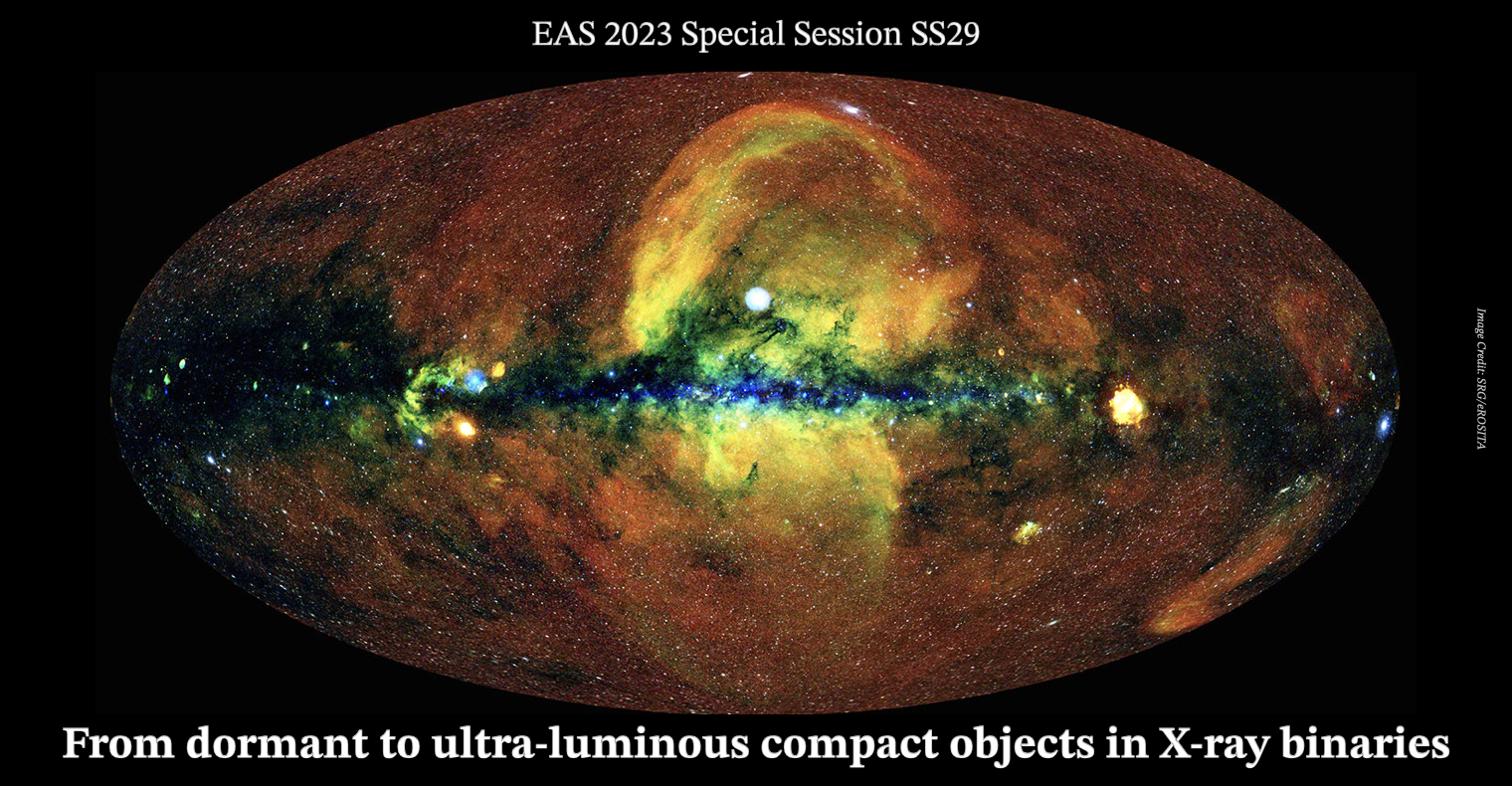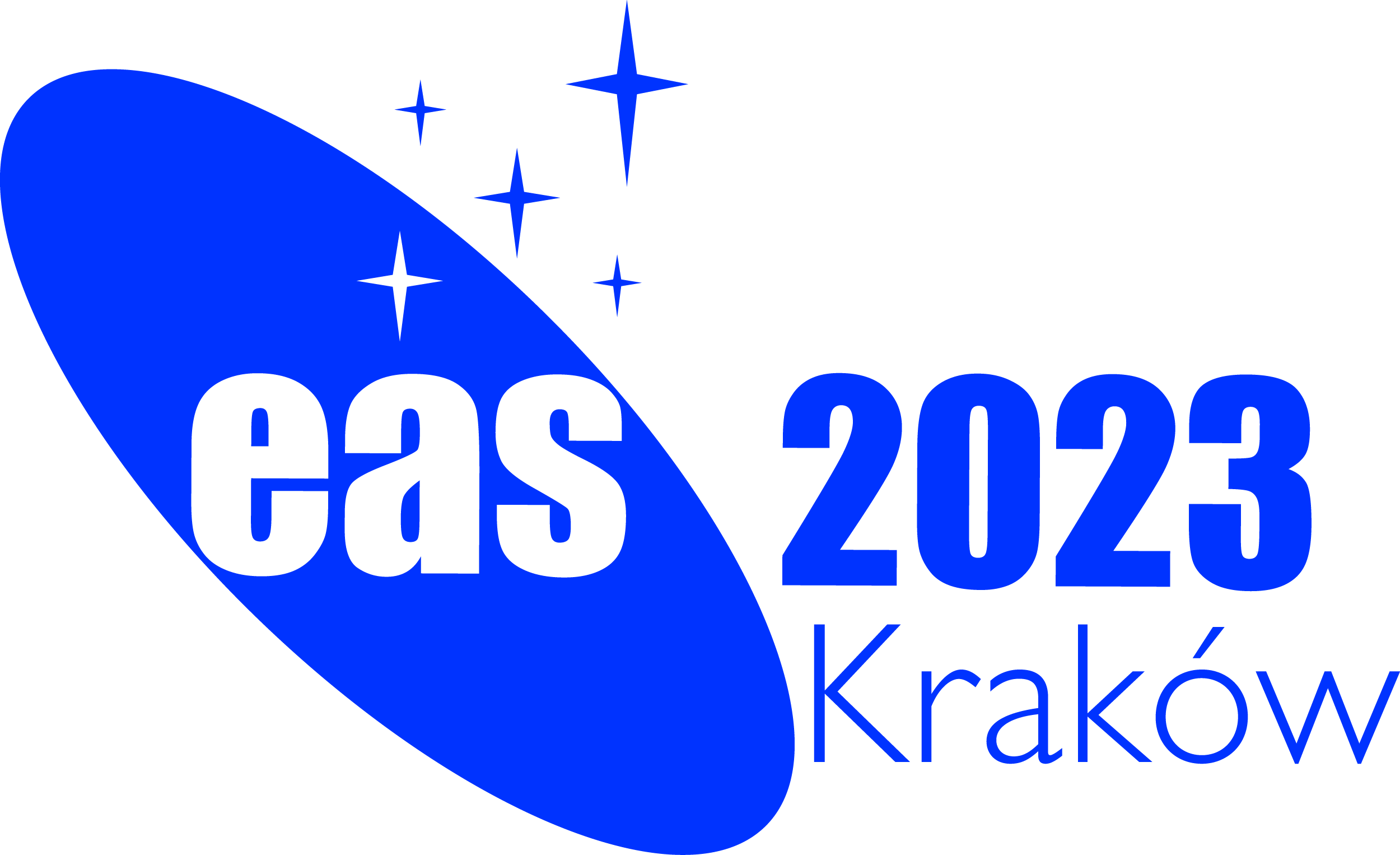Special Session SS29
14 July 2023
From dormant to ultra-luminous compact objects in X-ray binaries

News:
Registration for contributed talks is open! We strongly encourage early career researchers to apply.
More information to be announced...
Aims and scope
In this EAS Special Session we aim to bring together the X-ray binary (XRBs) community to obtain a complete and comprehensive state-of-the-art overview of this field. XRBs are unique laboratories that show diverse astrophysical phenomena from quiescence (dormant and low X-ray luminosity sources) to the most extreme X-ray luminosity (e.g., Ultraluminous X-ray sources). These systems are special not only for harbouring compact stellar remnants (neutron stars –NSs– and black holes –BHs–) that display different regimes of accretion from donor stars through winds or disks, but also for being key in the ionisation of their interstellar surroundings through strong outflows. This makes XRBs essential pieces to understand the puzzle of binary evolution that shapes galaxies. Multi-wavelength studies through different techniques, together with binary interaction and accretion modelling, are essential for unveiling the nature of the compact object, binary feedback and outflows of XRBs. Indeed, recent discoveries of X-ray quiet NSs and BHs in binary systems posted new, urgent questions about the radiatively inefficient modes of accretion. Thus, it is now clear that XRBs cover, at least, 8-9 orders of magnitude in X-ray luminosity.
During this EAS Special Session we will strive to bring together the observational and theoretical expertise of our community to find answers to important astrophysical questions such as:
- What allows these systems to be detected across such a wide luminosity range?
- What are the physical processes behind these luminosities?
- How do the different types of compact objects influence the physics of accretion?
- What are the lessons learnt from Galactic XRB population studies and what are the differences with binaries in other galaxies?
- How will multi-wavelength studies help us characterise the different transient phenomena related to XRBs?
The SOC is committed to providing an inclusive and welcoming environment, therefore, we will not tolerate any discriminatory behaviour related to age, colour, disability, gender, gender expression, gender identity, genetic information, nationality, race, ethnicity, religion, sex or sexual orientation.
Programme
This Special Session is divided in 3 different blocks with a duration of 1.5 hours each. We aim to have 1 review talk and 4-5 contributed talks per block.
The scope of this special session is to engage the X-ray binary community in order to find answers to fundamental questions in each of the following fundamental topics:
- Observational studies of compact objects in X-ray binaries at different accretion regimes.
- Theoretical point of view of accretion scenarios in X-ray binaries.
- Multi-wavelength observations of X-ray binaries.
Invited speakers
- Enrico Bozzo University of Geneva (Switzerland)
- Ekaterina Sokolova-Lapa Friedrich-Alexander-University of Erlangen-Nürnberg (Germany)
- Tom Maccarone Texas Tech University (Unites States of America)
Scientific organisers
- Alicia Rouco Escorial [she/her] (chair) ESA/ESAC (Spain)
- Lidia Oskinova [she/her] (co-Chair) University Potsdam (Germany)
- Roberta Amato [she/her] IRAP/CNRS/CNES/UDT (France)
- Nathalie Degenaar [she/her] University of Amsterdam (The Netherlands)
- Ileyk El Mellah [he/him] Grenoble Alpes University, CNRS, IPAG (France)
- Felix Fuerst [he/him] Quasar SR for ESA/ESAC (Spain)
- Antonios Manousakis [he/him] University of Sharjah (United Arab Emirates)
- Silvia Martínez Núñez [she/her] Institute of Physics of Cantabria (Spain)
Contact
Alicia.RoucoEscorial @ esa.int
Updated on Wed Jun 21 16:05:52 CEST 2023
|

 A power cut will shut down all EAS services on Tuesday, 10 January 2017 starting at 7:30 CET.
A power cut will shut down all EAS services on Tuesday, 10 January 2017 starting at 7:30 CET.


